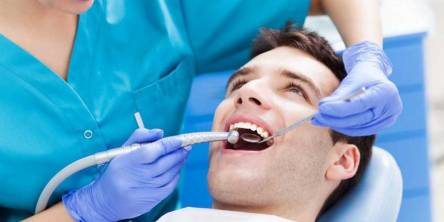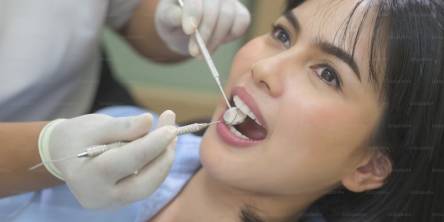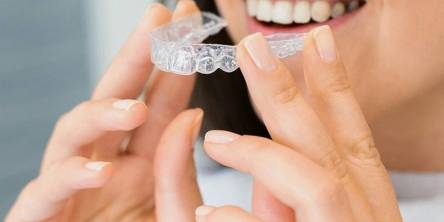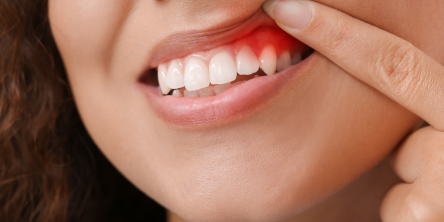The Lingual Braces Journey: From Consultation to Completion

The desire for a healthy smile drives approximately 4 million people toward teeth straightening procedures. When it comes to straightening teeth, lingual braces offer a discreet alternative to traditional braces and clear aligners. Positioned on the inner surface of your teeth, these braces are virtually invisible to others, making them an attractive choice for those seeking orthodontic treatment without a visible metal smile.
In this article, we’ll walk you through each step of the lingual braces journey and in-brace hygiene, from your initial consultation to the moment your new smile is revealed.
Step 1: The First Chat
Starting any orthodontic care and understanding when to get braces requires an initial consultative appointment. Your orthodontist conducts an evaluation of your teeth alongside goal assessment and checks lingual braces appropriateness for your specific dental needs during this session. The orthodontist will explain the operative mechanics of lingual hidden braces combined with their potential complications and expected results.
A first meeting with your orthodontist will contain this sequence of events.
- During the first appointment, the orthodontist will inspect your teeth and assess your dental bite alignment.
- X-rays, photos, and dental mold impressions form part of the imaging procedures.
- The therapy discussion includes instructions about lingual brackets and their estimated duration until completion.
- During the discussion, the orthodontist will discuss pricing details together with the payment methods available.
This meeting allows you to pose any queries regarding the comfort of wearing braces, discuss braces myths, and their maintenance requirements as well as end results expectations. The orthodontist will obtain dental impressions while taking X-rays and photographs to develop personalized treatment requirements.
During this appointment, ask all your inquiries regarding the treatment process, together with cost information and estimated timeline specifications.
Step 2: Braces Day
Your customized lingual braces receive installation when they are prepared and ready for placement. Your orthodontist at Smiles and Grins will put a bonding agent and then affix braces to the backs throughout this fitting appointment. The installation process requires several hours to complete, although pain is not normally expected. Your mouth will experience typical discomfort during the first stages of adapting to the new hardware system.
Your orthodontist will explain ways to look after your braces throughout the installation phase of treatment, along with methods of managing temporary soreness and in-brace hygiene. Here’s what to expect on braces Day:
- Before attaching braces to your teeth, an expert will provide you with teeth cleaning services.
- During bonding, the orthodontist puts brackets on your teeth by using a safe adhesive mounted behind them.
- The healthcare professional will provide advice about managing initial discomfort caused by braces during the first several days.
- The care instructions provide information about brushing techniques alongside flossing and proper maintenance of braces.
The adjustment period to the new hardware will cause some mouth discomfort, but such pain is typical for the process. Your orthodontist will explain the necessary steps for caring for braces, along with methods to handle temporary discomfort.
Step 3: Day-to-Day Life
The process of wearing lingual braces demands changes because of their position behind the teeth. Your eating habits should change to exclude hard, chewy, and sticky foods since they pose a threat to your braces. Proper oral hygiene remains essential since cleaning the rear teeth demands additional effort.
Water flossers combined with interdental brushes serve as tools that assist you in maintaining clean teeth despite wearing braces. The early phase of wearing lingual braces may cause temporary speech anomalies, although speech usually normalizes in the future.
Step 4: Tune-Ups
Frequent visits to your orthodontist serve to verify that the progress of your treatment stays on course. Your orthodontist conducts scheduled appointments for readjusting braces, which help teeth move toward their future positions. Your orthodontic specialist will track your treatment development and solve any issues that arise while confirming the correct progress.
Patients need to schedule regular "tune-ups" every 6 to 8 weeks because these appointments combine with temporary discomfort to help obtain their optimal smile outcome.
Step 5: The Finish Line
The time to remove lingual braces arrives during either months or extended periods of treatment. Careful removal of braces by your orthodontist will expose the newly straightened teeth after cleaning each tooth. Your treatment includes receiving a retainer for both protecting your results from shifting back and helping keep your teeth in the proper position. The final step is to ensure that your smile remains healthy and well-maintained for numerous years after your work to improve its appearance.
Conclusion
The process of wearing lingual braces demands dedication since the end results will fulfill all your expectations. Each phase in your lingual brace treatment leads you progressively toward your goal of a healthier smile combined with increased self-confidence.
Directed by qualified orthodontic professionals and away from common braces myths, lingual braces function to discreetly and efficiently create dental transformation. Authorized consultations mark the first move toward building your journey toward achieving a stunning oral transformation.
Similar Articles
Teeth and gums form a complex system that functions daily and continuously. We often underestimate their importance until pain, sensitivity, or other unpleasant symptoms arise.
You take a sip of iced water, and suddenly, one tooth lights up with a sharp sting. That quick shock is more than annoying; it can change what you eat, how you drink, and even how you breathe in cold air.
In the past, correcting misaligned teeth meant committing to years of highly visible metal braces, diet restrictions, and frequent, sometimes uncomfortable, adjustments
Baby teeth can cause a lot of worry for parents, especially when things do not seem to happen on
Ever caught yourself hiding behind your hand during a good laugh? Or dodging the camera at family gatherings? Those small chips, stubborn stains, or awkward gaps in your teeth can chip away at your confidence year after year.
When most people think about straightening their teeth, they envision traditional metal braces. However, because of recent advances in orthodontics, there are now more discreet, pleasant, and efficient solutions available.
Healthy gums not only ensure a beautiful smile but are also essential for overall oral health. However, conditions often arise that require surgical intervention in addition to dental treatment.
A tight booking calendar, a last-minute casting call, and a grin that has to look flawless by Friday—life as a Harlem creative rarely leaves space for dental upgrades
Gingivitis is an inflammation of the gums caused by the accumulation of plaque and bacteria.









